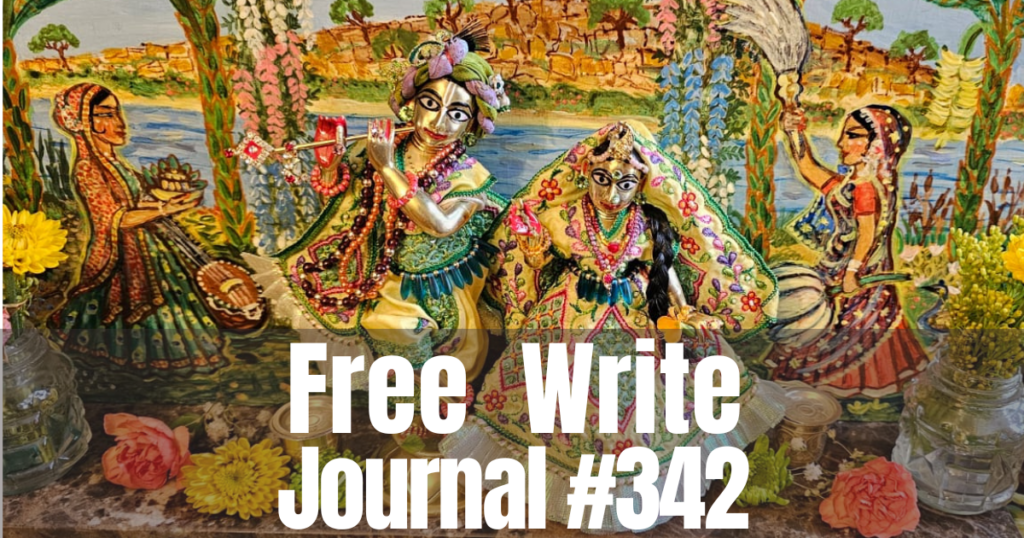
If you would like to help, please contact Kṛṣṇa-bhajana dāsa at [email protected] or [email protected] and we will find you a service that utilizes your talents.
Vrnda, Vrnda what do you think?
Will I be able to read and chant?
Realize you and Krsna consciousness?
Earlier today was nice reading
of Radha’s love.
Now the day is going down,
I didn’t
achieve taste in japa but
I ask you, dear self, chant
another round.
Ask the Lord for
mercy to persist.
******
Fourteen “good” rounds. That means I chanted them vigorously with the motor running. Not attentive or prayerful.
The goal is not to increase mechanical rounds. Start with awareness that chanting is important, shouldn’t be pushed aside, neglected. Here’s a special chance to start a wave in Vrndavana and continue it after I leave. Hear the names, can you?
Chanted rounds fifteen and sixteen on the roof of the Guesthouse. Don’t think I’ll do it again. Nice sky and scenery, and interesting things for the mind to play with. My pleasant Room 42 is more private, better for japa.
You would do well to stay there and chant extra, sit down when you want before Prabhupada’s altar . . . I wish I could—be content to stay in this room and chant Hare Krsna Hare Krsna, Krsna Krsna Hare Hare/ Hare Rama Hare Rama, Rama Rama Hare Hare.
******
Twenty rounds done. I can’t report that it was a great day, but I did chant some extra rounds and wanted to. That’s good. I can keep it up as long as I don’t get head pain. When all is said and done, chanting is left. It’s the first and last spiritual practice. It’s what I do.
I actually heard the words of some mantras. If I keep on chanting, I’ll start seeing clearer how bad my chanting is. Then I can chant in that space. Chanting supplies the answer.
Red beads are fine, thank you. Hope they last as long as I do.
******
My bhajana is to rise at midnight and to write and read. I’m grateful to be able to do that. I go straight to Prabhupada’s books; that’s certainly a kind of puja. Then I write, my worshipable practice, and then chant japa—the best worship. I worship the Prabhupada deity at two different times in the day. I think I’m already complete. At least I have a complete schedule for purification. If I were to take up a Govardhana–sila, I think the drive to do so would have to become more spontaneous for it to make sense for me.
******
Fourteen rounds so far. It’s not going to be bliss and easy and feeling, “Wow, I’m on a wave of reform and new pleasure in chanting; I’m on an increase in quota like the one I did for three months and wrote about in Japa Reform Notebook.”
It’ll be something, however, if I can give that little extra push, that little extra effort to hear the Names and to do a few extra rounds. Don’t stop dead, cold-stone finished after sixteen. Hari-nama awaits you.
Reclining on the desk
they invite me once again
my red japa beads.
Take them up and finger
and walk and sit.
Push . . .
******
Twenty-two rounds done. I could do another. They are not “better,” but I get more of a chance to chant with attention. The mind separates and notices the individual words as they occur: Hare, Krsna, Hare, Krsna, etc. That’s a gain.
Don’t say anything else in this log, as if all you do is live to chant.
******
Chanting makes chanting
and Hari takes all and gives more.
Always chant—sixteen,
twenty, twenty-five
and don’t give up
’til you die.
Japa awards and
punishment.
Am saying what comes
just as in chanting rounds
please pay attention
and rescue your own
dharma.
Fishtail Puri
memories—
begin another round
on beads.
******
This log can’t last. It doesn’t matter. It’s 10:30 A.M. and I did one extra above sixteen. Do another. Cool air. Someone at the door. Chant, chant
can’t, can’t
red beads in hand—the essence of Vrndavana. Chant here and carry it west, extra is all I know to improve.
Zero, desert. Music of beads. New counters. Hear, man. The writing can help, but chanting is itself, is Hare Krsna mantra.
******
Twenty-one rounds, the last one done in front of my disciples. Someone looked at me. Someone took a flash picture.
Kept on chanting. I spoke on the need for humility in a life dedicated to chanting. A devotee assigns himself to a lower position. How to do it practically?
Be humble when you chant and don’t record brilliant ideas that come while you chant. Hare Krsna Hare Krsna, Krsna Krsna Hare Hare.
******
Empty, but I did two rounds above sixteen so far. I wanted to chant them. I thought of other things while my voice said the mantras, and that makes me sad. I walked back and forth in my room carrying a bamboo walking stick until my ankle started to hurt.
If I come to Vrndavana next year with a plan to chant thirty-two or sixty-four rounds a day, would that help? O holy names . .
pp. 36-42
Srila Prabhupada has advised us to hear and recite the standard prayers in Vaisnava parampara, such as the prayers of the Brahma-samhita, and the many prayers contained in the Srimad-Bhagavatam. He has also encouraged us to pray in our own words: “With devotion one should feel, ‘God is great, and I am very small. Therefore my duty is to offer prayers to the Lord'” (Bhag. 7.9.12, purport).
Because one goes to God through the guru, it seems more natural to offer prayers to the spiritual master. How can I dare to directly address Sri Krsna? Prabhupada says it is our duty. And Prahlada Maharaja states, “Anyone who has been forced by ignorance to enter the material world may be purified of material life if he offers prayers to the Lord and hears the Lord’s glories” (Bhag. 7.9.12).
With this in mind, one may begin. But we should also always be aware that whatever prayers we make will be inferior to the best prayers already composed.
My prayers may be taken as additional proof to the Srimad-Bhagavatam statement that devotional service may be practiced in all circumstances, by all living beings, including the demons, the beastly species, and the fallen souls.
Although I am enveloped by the modes of passion and ignorance, and although I actually have little desire to glorify You, I have nevertheless composed these pretended prayers, posing myself as a great devotee eager to praise You. 0 Supreme Lord, 0 maintainer of the earth, even though these prayers are a sham, please accept them anyway, and please also teach my mind how to properly glorify You.
—Stotra-ratna, Text 56, Srila Yamunacarya
My dear Lord Krsna,
I appreciate the prayers of all
Your sincere devotees,
who address you as “most high,
all powerful good Lord,”
and who address You by many titles
such as God, Creator,
Jehovah, Allah,
Brahma, Visnu and so on,
and who approach You through many mediums,
such as the son of God, the prophet, or the guru.
Out of the multi-addresses
and many appearances
and manifestations of Yourself,
I have become most fortunate to see You
and worship You, and call upon You
as Lord Krsna.
I pray to You as Krsna
because the name Krsna means “all-attractive,”
and because in Your form of Krsna,
You offer the most intimate exchanges of love
with Your best devotees.
Besides, my spiritual master has taught me
according to the Vedic scriptures,
krsnas to bhagavan svayam.
Chanting Your names,
is the only remedy for those
who are rotting here in birth and death.
Dear Supreme Lord Krsna,
I pray for connection and Your grace
so that I may actually praise You
for Your pleasure
and the pleasure of my Guru Maharaja.
Dear Lord,
my time is running out.
What shall I do?
Is this mediocrity?
What shall I do?
My dear Lord Krsna, please
let me remember You
in the morning before mangala-arati,
and when I chant Your holy names.
Please let me remember You
when I bathe and dress and when
I apply tilaka in twelve places.
When remnants of thoughts
pass through my mind,
let them fly to You
or else be gone!
Please let me remember You
as the greatest, always a person,
the oldest but eternally young,
the best philosopher,
who has been fulfilling everyone’s desires
since time beyond memory.
Please allow me to live with You
in devotional service
as taught to me by my eternal guide,
Srila Prabhupada.
Let me pray to You,
and talk with You
as Your servant
every day.
Please shed light today
on my way, so I can chant Hare Krsna
and be with You.
Allow me to be with You;
let me hold to You today.
All glories to You, Sri Krsna,
You performed all the acts
described in sastra
and eternally You perform them.
I will read the sastra with faith,
and if I can speak or write today,
let me explain
and expand the meaning of parampara.
In this busy world,
as I seek to be free of maya’s grasp,
please be with me.
—19 April 1988
pp. 338-42
It’s blazing sunlight. The roof is hot to the touch of my bare feet. The birds and squirrels don’t even seem to know I’m up here, as they sing and peck around me in my net-tent. A batch of goats walk ahead of their herder in the field. The donkeys bray occasionally. The bull with loose folds of skin under his chin and a big hump on his back walks forward like a supreme court justice, followed by his white cows and an attending heron. The cows nod their heads as they walk. Is the path a footpath for people or cows? “Sita-Rama! Sita-Rama!” The amplified singer is emoting with devotion, a strange mood it seems to me, in Vraja’s forest. I’ve got my stick propped against the desk, just in case a monkey comes. Dome-tops of temples among the treetops.
Small boys can take care of many cows and bring them home. When a large white male donkey hee-haws and tries attacking a young female, the little boy gently intervenes and chases the big one away. The little ones graze quietly under a tree and the big one forgets his agitation and wanders off.
A woman passing by with a bundle balanced on her head. She can carry it and still walk with a graceful dance step. Srila Prabhupada compared this to a sadhaka’s ability to chant Hare Krsna with attention even while engaged in other tasks in the world. It can be done, some seem born with the skill and others . . . even when they stop all else, still can’t stop to hear the holy name.
“Filled with wonderful bliss by seeing the transcendental pastimes of Sri Sri Radha-Krsna, the forest of Vrndavana has now decked itself in beautiful blue and yellow garments of indivara and campaka flowers and a garland of excited bumblebees” (Vrndavana-mahimamrta, Sataka 11.51).
Is this Vrndavana that we see? Is it the unmanifested Vraja? What is the relation between the two? Have we not already discussed this? Have you forgotten? Can you understand even if I give you the answer? Is the answer “both”? “Yes”? “No”?
This Vrndavana is not that Vrndavana, and yet it is for one who has eyes (meaning one whose mind is not in America, but at the lotus feet of Radha and Krsna). This Vrndavana is “Vrndavana.” Prabodhananda Sarasvati says, “Sri Vrndavana is everything I have searched for in this world.”
Tomorrow we will definitely go back to Mathura. The towers of the Kesavaji temple are clean and freshly painted, situated right in the midst of Mathura madness. The front entrance is crowded with carts selling juice and fruits, travel bags marked “Bush,” “USA of class” and portraits of Indira Gandhi. A Muslim squats in front of the big engine he’s repairing next to a jalebi shop doing brisk business. Then we see four little girls crossing a black puddle of sewage and a camel with all four legs soaked in the black filth. Then a boy leading a goat and a crowd gathered to witness some event or other . . . We always escape into the temple as quickly as we can.
Pleasant rain. Monsoon season is almost over. The lightning in the monsoon cloud is, sometimes compared to Radha on the chest of Syama. But when Tulasi-manjari saw Radha and Krsna embrace, she spat on this metaphor as inadequate.
I used to think the open hallway was my place, but now I realize it belongs to the frogs of assorted sizes and colors who find their way in here.
Across the road from us, three men stand in the doorway of the old brick building, looking at the rain as I am doing. It’s gentle, filled with relief from the day’s heat.
“Sita-Rama! Sita-Rama!” That asrama must have electricity, although we have been without it all day. Baladeva should be returning soon from his all-day parikrama.
The body seeks relief. The flowers and plants seek relief. The rain symbolizes the tangible relief. For so long we have sweltered and dried up and could not escape the burning sun. Now a gentle rain at end of day. This may be a metaphor of what it will be like when the rain of blissful, tearful chanting of harer nama finally descends on the harried practitioner.
Concentric circles in the puddle. I would like to see the rain stay for awhile, all night if it likes. It is so cleansing and relaxing, being soaked up by the earth. But it is already slowing. Passersby walk slowly past. No one runs to get out of this rain. It’s an abhisekha—and now it’s over. The birds sound grateful.
pp. 121-24
If a guest at a Krsna conscious lecture says, “Sorry, but these teachings of Krsna as the original Supreme Personality of Godhead, and Brahma as universal engineer, don’t ring a bell for me,” that refusal to accept parampara isn’t the same as truth. It’s just his tiny view, influenced and prejudiced by the time and teachings he has known. We want a person with faith who reverberates with Vedic authorities. We want a pure devotee of Krsna. But we have to accept ourselves as we are now and render service to ourselves as well as others by remaining faithful to our desire to enter the magic circle. We want to be among the elect, the devotees who believe cent percent in the words of their spiritual master, and who become empowered to preach them without fear. I spoke yesterday about shooting for the rhinoceros. One devotee since then wrote me of his plan to preach throughout the country. Yes. And a little prayer to not to become puffed up or corrupt. May we be genuine persons in this Krsna consciousness movement. There are others, no doubt, who are genuine or not, but we have to be concerned with ourselves. Hare Krsna.
Trivikrama and Linc have been visiting from America. They are musicians. I spoke to then several times about a creative project we’re undertaking together for a multimedia presentation. Then I thought I shouldn’t leave them with the impression that our main endeavors are artistic. I received a letter from Jaya Sacinandana dasa expressing his own concern about this. He is an artist. Many young devotees who come to Krsna consciousness recently seem to be interested almost primarily in aesthetic or creative ways to express themselves as devotees. But one has to be cautious about this. Here’s what Jaya Sacinandana wrote:
It’s really a change moving from Washington, D.C. to Boston, but it’s nice because I am being exposed more to the other side of Krsna consciousness, the brahmacari, book distributor, temple devotee side of things. Being around this has really made me analyze my own Krsna conscious situation. I look back and read journal entries I made in Washington and also when I first moved here, about being an artist and a devotee. Those entries seem a bit pretentious, almost puffed up with a concept of being a devotee-artist. For someone like me, at the level of my Krsna consciousness, who am I to feel so confident about going so deep into personal self-expression? I mean, it’s not that I would, or could, stop making art, or working toward Krsna conscious self-expression, but I want to be careful not to lose myself in the pursuance of this before I’m mature enough to handle it.
So being with devotees in the temple life mood has served so far as a reminder of the importance of a strong foundation in the basics of Krsna consciousness, that self-expression or Krsna conscious art is only worth something if it is accompanied by strong, regulated, everyday Krsna conscious devotion. Anyway, I’m far from having a tight grip on that side of my spiritual life yet, so I feel confident in working on strengthening my everyday commitment to Krsna consciousness as a part of my working toward Krsna conscious self-expression.
I shared this with Trivikrama and Linc. In one sense, I am in a different category than them. I’m older, and I served for many years without indulging in creative expression. As if now I’m entitled. I admitted that I’m in the same boat as them in that yes, creative expression is wonderful, but yes, it can be dangerous. No one will want to hear from a flaky devotee. On the other hand, creative expression, as a cultural weapon, is an important way to preach. It cuts through. One could say there’s no need for art in Krsna consciousness, but the rendering of scriptural themes in painting, music, drama, dance, etc., are natural expressions. They also help prove that Krsna is everywhere and that we can see Krsna in everything. From the beginning days on the Bowery, Swamiji used to encourage us to become artists for Krsna (or to become whatever we already were).
pp. 171-74
In Northern Ireland there is a small island called Inis Rath. It is a forest filled with many rare tall trees planted by the former owner. It is now owned by the Hare Krsna devotees, who also own an adjoining peninsula named Geaglum. On Inis Rath there is a good-looking building which is the home of beautiful Deities, Sri-Sri Radha-Govinda. They have a dedicated pujari who chose many new outfits for Them. Not many devotees live there. But there is a dedicated group who maintain Radha-Govinda on Vaisnava holidays. Devotees from all over Ireland gather at Inis Rath for festivals.
I spoke on the phone with my Godbrother Haridasa from Maryland. He is a counselor on the faculty of a community college. He is attending a writing conference at the University of Arizona. Everyone did some writing, including Haridasa. The poet laureate of Arizona attended. He is legally blind and is guided by a seeing-eye dog. He read a piece that he wrote about being in Grand Central Station, New York with his dog. Another woman read from from her book Sonata.
When she was young, she was planning a career of being a classical pianist, but she developed severe arthritis in her hands, and her memoir is about her struggle to contend with her handicap. Haridasa brought one of my books with him for the airplane journey, Vraja-mandala Parikrama: A Writer’s Lament, and he said he enjoyed it very much.
I’m looking again at Natalie Goldberg’s Writing Down the Bones. She says you may have to write whole notebooks of junk before you break through. It is the practice school of writing . . . composting. But I do not want this Journal to be junk. Should you write some and omit the weak parts? Go to the heart. I chant mechanically. Every mantra counts.
******
How do you respond to a headache? You take two Excedrins. How do you deal with writing resistance? You write through it, to an honest place. How do you keep going? You don’t stop. You think of Krsna. When Brahma appeared on the lotus, he didn’t know what to do. He heard the sound vibration of two syllables, ta pa. He practiced austerity for a thousand years. He saw Krsna within his heart. Then he wrote Brahma-samhita, each stanza ending with govindam adi purusam tam aham bhajami. Krsna was pleased with him and shook his hand. How do you continue? You chant the Hare Krsna mantra silently in your mind. How long can you keep that up? If you chant humbler than a blade of grass . . . . you can chant the holy names constantly. Partha Sarathi Maharaja chants many more rounds than I do. He has many pictures of his Godbrothers and Godsisters, and he offers a prayer to each one. Visakha just came to offer milk and fruit to the Deities. In half an hour Baladeva will come up, and I’ll take night pills and then go to bed. I usually sleep well until around 1:00 A.M.
******
N.G. says we all have obsessions and we should give them space and attention in our writing, but not too much. Some of her obsessions are her Jewish family and chocolate. I have an obsession with struggling to improve my japa. I chant mechanically, and I can’t seem to do it better. But I am always aware of it and try to make progress. Another obsession is writing. I want to do it prolifically, in Krsna consciousness, but spontaneously and humanly.
Write with details: your maroon Nike shoes, a column of smoke from the incense stick, the flowers on the altar. I exercised six minutes on the bike, and I am perspiring. An illustrated children’s book, Krsna, the Dearmost Friend—it’s all parampara. Krsna is bluish and all-attractive.
Hearing, hearing, listening is the primary act. I don’t do it so well but at least I do it. Hearing the message Lalita gave to the swan, telling of the piteous condition of Radha? Is it make-believe? The ravings of an ordinary girl or just from the mind of the poet to mislead people? No, no. It is all the inner meaning of the Vedic scriptures. We hear of mystics of various traditions, mostly the inner meaning of scriptures is like that direct experience of oneness with impersonal tinge. Even if it is sometimes in the language of amorous love. But there is something different entirely. The Lord has a spiritual body and so do his consorts. And you can go and join them. Who can understand this except one pure of carnal desire and also free of jnana? I am not so free and pure.
But I do hear these pastimes regularly and I want to feel the bhava. Sometimes I read on the tape and sometimes Madhu and sometimes I ask others to do it and I hear them. To listen while putting bracelets on Radha and Krsna and dressing Them (today the cycle returns to the brownish color and the stiff cloth, the gold crust, very nice) as morning puja.
pp. 133-34
Dressed the Lord and Radha in clean white dresses, His with trim patterns of flowers and yellow and green, Hers with border flowers of blue and gold trim. They both looked very nice and shining from yesterday’s cleaning. Hearing Sri Hamsaduta once again as I perform the puja. Radha’s condition of separation is extreme, fire-like suffering. We glibly say, “She’s not really suffering, it’s a transcendental joy.” And that’s true too. But in the transcendental world there is a suffering which is not a light or cheap one. It comes only after all sufferings and joys of the material world have ended for a pure devotee.
p. 207
This routine is good. Don’t seek to change it but to fill up these hours. The gopis said, “If we could be with Krsna again, we would worship those moments and hours.” They would worship with incense and lamps. As you perform puja to the Deity form, they would worship the forms of that blessed time in which they had direct association with Krsna. My worship of Krsna is in time and I’ve got that time now.
p. 237
So, what is our position? Srila Prabhupada recommends Deity worship. “A devotee constantly engaged in Deity worship…realizes gradually that he is in direct contact with the Supreme Personality of Godhead.” The Deity is an incarnation of the Lord in brass. It is not an idol but Krishna. And Krishna is in His name. Wake up, dumb-clutz, and realize and approach this.
It is nice how Srila Prabhupada takes each statement by Radharani and teaches something in it that we can practice in spirit and that we can relate to. That is his kindness. We get both an appreciation for the bhava of Radha and a practical instruction.
p. 246
Now the Deity worship is finished. I finally got up the nerve to dress Them in bright red with gold trim. I’ve been thinking it was too strong and I was too headache prone. I wanted softer colors like the yellow and green. But then I said you just go ahead and choose the red. It won’t affect you that way. Let Them have that selection. And They look very nice. I’m still attracted to things other than Their worship. They should be worshiped in an exclusive way, not that you have a corner shelf with Radha-Krsna there and pop music is playing on the radio and people are talking prajalpa and doing nonsense, angry, etc. in the house. Of course, that’s not me, I’m just giving a crude example. I’m near perfect.
p. 79
Light green gold trim, and for the first day in months I gave Them cadars because it feels too cold without. If I need a sweater, then why not Radha-Krsna? Later today if it warms up you may remove the cadars. Jewel necklaces are covered by the shawls so that’s a reason not to use them but it’s more important to keep Them warm.
p. 98
What about Radha-Govinda? Oh, I’ll tell you. It went real nice. I was in my beloved routine and a little ahead of schedule, listening to Prarthana and going at the bathing and dressing. The poet was saying the Divine Couple, aspiring to dress Them, and I was just doing just that. So, it was nice, choosing the patterns blue and pink and the right necklaces. The silver goes with it, His buffalo horn…and we’ve been hearing in Govinda-lilamrta how He has breakfast.
p. 116
pp. 352-54
At airport, delays. I asked him when we go to Vaikuntha there is none of this? He quoted Bhagavad-gita. “No, Krsna says, ‘He comes to Me’ immediately. There is no question of passports. He said, “This is a nonsense place. It is not fit for a gentleman.” Then seeing family, he commented, “They think wife, family, & friends will protect me. Just as king feels he is protected by soldiers. (All this while sitting in an airport in Calcutta.) When there is danger one thinks, “I have my wife, family, they will protect me.” Remembered when he was a child there were so many relatives, where are they now? All dead.” (Wow, I am in a different atmosphere!) Chastised Srutakirti for pointing his foot at his spiritual master. He said there are so many Vedic rules. One shouldn’t hand anything with his left hand.
Women, even when he was child, would never take employment, that was insult to the family. And one would never go to the hospital—would rather die at home. And even a poor man would starve rather than ask for anything. His mother wouldn’t even go next door but would take a coach. If one invited a woman it was understood, “a coach will be sent.” If no coach was sent, no one would go. So even to go next door to the Mulliks she would take a coach. They wouldn’t even hook up horses it was so close, but a man would pull the coach—only next door.
Car not ready to take him ’cause Madhavananda took it. He called him “an obstinate rascal” (he had done it before).
Chastised Sruta-kirti for baring leg, pointing foot at spiritual master.
Calcutta: “I used to drive down this street on a bicycle. It is now not much different than it was then except for the skyscrapers.”
The Maidan (park) was there & he first encountered it when he was two years old and can remember.
Giriraj dasa said Prabhupada said six months in India is equal to two years in U.S. They (devotees) were comfortable in Akash Ganga flat and didn’t want to move to asrama at Juhu which had far less amenities. Srila Prabhupada said to Tamala Krsna Goswami: “Don’t you want to be purified?” Dravida dasa (Swami Pancadravida) said Juhu asrama had rats & was run-down. His Divine Grace said, “Many people in India live in very simple houses & they keep them clean but you Americans eat something & throw the dish in the corner for six months—that’s why you have rats.”
Tribulation is good for advancement. The pain the devotees suffered while Mrs. Nair sometimes turned off electricity & eleven days without water, blasphemed, tore down the temple—that pain is austerity & makes for advancement. So the difficulty of India makes one turn to Krsna (if he is intelligent) as the only shelter. Buying soda may be a necessity sometimes when water is bad but it has to be done in service to Krsna. U.S. plush facilities may not be so beneficial. It depends on the attitude of the devotee.
Calcutta: Said private house in which pandal was held was “a dungeon.”
Giriraj said Prabhupada was discussing how Sanatana Goswami offered a bribe to get out of prison to go to Caitanya Mahaprabhu. He said he offered black money. The purport is one should hold the satisfaction of Krsna as the only morality, above all other codes. “When Krsna asked Yudhisthir to tell Dronacarya his son had died, Yudhisthir said, ‘I cannot tell a lie.’ So that is his defect; he is not as great a devotee as Arjuna.”
Prabhupada’s conversation took place while sitting in the public lounge at the airport. He had displayed fiery anger when he was at the temple because the car was not ready. It was Madhavananda’s fault—using the temple car in the morning for some householder purposes. Prabhupada saw it as sense gratification. At first he called him a fool and then he added, “obstinate fool.” It was a glaring exposure—because of Madhavananda’s personal concerns, his spiritual master was inconvenienced. Prabhupada finally walked out of his room ready to go to the airport even though there was no car. He walked out to the street and demanded that his disciples do something immediately. So we arranged for another car, but Prabhupada remained in a chastising mood toward Madhavananda.
Once there was a gurukula boy who decided that, when he grew up, he would probably get married. After all, his father had been married, and in fact even those sages who never married were themselves sons of married persons. So it seemed inevitable. This boy, whose name was Dhira dasa, was too young to think very seriously about marriage. But if an uncle or older devotee asked him, “Are you going to be a brahmacari when you grow up?” Dhira would reply, “No, a grhastha devotee.” The parents were amused that a young boy had decided to become a grhastha.
When he grew up, it wasn’t so easy to get himself married. One reason was he belonged to a society for pure devotional service to Krsna. Devotees of Krsna don’t like to marry persons who have no affection at all for Krsna. Sometimes people ask devotees, “Are you allowed to marry people who aren’t devotees?” But devotees think, “What a strange question!” It’s not that someone forbids them to marry a nondevotee, but how could you love someone who doesn’t love Krsna? Since there are so few people who love Krsna, it is sometimes hard for devotees to find a husband or wife when it is time to get married.
Another reason it was hard for Dhira to get married was because he wasn’t very big or handsome, and girls generally like someone who is at least a little bit like Ramacandra or Laksmana. Although devotees are supposed to love everyone, you can’t expect an innocent young girl to marry someone who looks like a Yamaduta. But then there is the history of Vyasadeva. He was considered ugly. Even some of the women who married Vyasa couldn’t bear to look at him. One wife closed her eyes when she went to see Vyasa, and as a result she conceived a child who was blind, Dhrtarastra. Another wife turned white when she was with Vyasa, and she bore a child who was very white, Pandu. But when a sudra woman accepted Vyasa and served him nicely, she bore a child who was a great devotee, Vidura.
Intelligent girls know that “beauty is only skin deep,” and so they look for good qualities in a boy they want to marry, such as whether he chants Hare Krsna japa with attention, and whether he has a good reputation among the Vaisnavas as a surrendered soul. If you could find a husband who was considered a good devotee, even if he wasn’t handsome, that would still be fortunate. Ideally, devotees should mainly consider whether the person they marry is a serious devotee. Prabhupada writes this in a purport:
A devotee is transcendental, and therefore in a marriage between devotees, the boy and girl form a very happy combination.
—Srimad-Bhagavatam 6.2.26, purport
Some girls count high in their estimation the ability of a devotee to protect them by strong financial income, or they look for a man who is sensible in how to survive in the material world. For example, if a young man was very good-looking and a good devotee but was poor as Sudama Vipra (who was so poor that his wife didn’t get enough to eat, and they lived in rags), that might be another disqualification in a husband, at least for some girls.
Dhira dasa lacked in all these qualifications, and so he couldn’t find a wife. Still, he thought that he probably should get married and that there was a girl somewhere who would appreciate him. Maybe there was a girl who also wanted to get married and who had been passed up by other men, and Dhira and this girl might just like each other and be what is called “compatible.” Sometimes Dhira became quite concerned about this, especially when he reached twenty years of age and he still didn’t have a wife.
Because too much talking or thinking about marriage is definitely maya, and a devotee should concentrate his thoughts, words, and deeds in the service of Krsna. Dhira decided not to talk about it anymore. But he continued to think about marriage, and sometimes he dreamt about it.
One night in a dream, a Matchmaker appeared to Dhira dasa and said, “I have the power to marry you to any girl according to your wishes. As a reward for your devotional service to the Supreme Lord, I will arrange this for you.”
Dhira doubted whether this Matchmaker was himself a devotee of the Lord, because he had never heard of such a person in Vedic literature. He had heard of matchmakers, and there was even such a person who appeared in Caitanya-lila and arranged for the marriage of Lord Caitanya and Laksmi-devl. But that was different.
“Will you be able to fulfill my request for a girl who is a good devotee, in addition to other qualifications?” asked Dhira.
“You request and I’ll comply,” said the Matchmaker. “What more do you want?”
(TO BE CONTINUED)
pp. 73-78
KC is the life of
chastity
celibacy
transcendental knowledge.
It’s all in the books, if we read them.
It comes through us
with faith.
It could light up a dark world,
make peace of a storm,
except the people (us)
don’t want it enough.
I’m trying to give up pretense.
I’d like to be something, a bhakta,
but I’m a poor substitute.
I play this down and say to you
anyway that Krsna is God,
is in everything, and it’s
better to specify for ourselves
what that means and drop the excesses
be His man (or woman), to
speak what He does, to chant.
Neck ache, eye ache, lie down on
mattress and sleep, dream—all in
Krsna’s time.
He’s above it all.
In Vrndavana their love is not
because Krsna is God.
They love Him for Himself.
Prabhupada said, “These are not stories.
A fly called diwali
lives only one night. If we told that
insect, ‘There’s a human being who lives
a hundred years’ he wouldn’t believe.
You kill a million ants or people with an atom bomb
and there’s a creature who kills you
in the same way.’
Time I am,’ Krsna says.”
When our master talked to others he
said to live with the devotees,
chant to be with God,
and stop murdering others.
Start with that.
It’s 7 P.M. I’m calm and slow as I
go about my work. Peacefully
I accomplish something, then move into
the next room where Srila Prabhupada on altar
is illuminated by tea-lights
shining.
And I chant
the mantra that’s beyond me.
Prabhupada, may I put you to rest?
I’ll wrap you in blankets
and then ask your forgiveness,
and your permission to sleep.
I have to admit
I like to sleep without
you pressing the intercom bell, calling
me to stay up until 11 P.M. to massage you.
I need my space, I say, and I nod at
my lack of surrender
from my old man’s niche.
I’m satisfied, but I realize that you
may demand much more.
It’s like a fix you keep needing
several times a day—
to touch a purport quick.
I need to see Cc.—
at least hear something. Come on, tell
me something, will you?
In Geneva Prabhupada told a
hatha-yoga teacher
bhakti is best.
Husk without paddy is useless. Take
Krsna directly from hearing and
serving, chant. I can’t remember exactly.
I need a fix of
precise words.
I ought to make
non-mundane poems. I’m
not among the solitary monks
who pray all the time in
Christian vigil or Gaudiya japa
—100 rounds a day at
kutir or kunda, Vrndavana.
I’m not on the GBC
or any committee.
Then where do I fit in?
Am I an artist?
A psychologist?
A clown?
Poet-taster?
I just don’t have a taste
for so much stuff.
I abhor hamburgers and all
meat and cigarettes. Abwhore
word play. Deer shriek at me
when I walk by.
The thing is, I’m not strong.
I’m nearly 57 years old.
I want to practice and ponder
favorite scriptures. Tune into
sravanam kirtanam visnoh-smaranam.
Thinking that, then and there I wrote on
two index cards
verses 9.1 and 9.2 and
looked at them, recalled them,
chanted them from Dublin to
Fermanagh—recited them
until memorized.
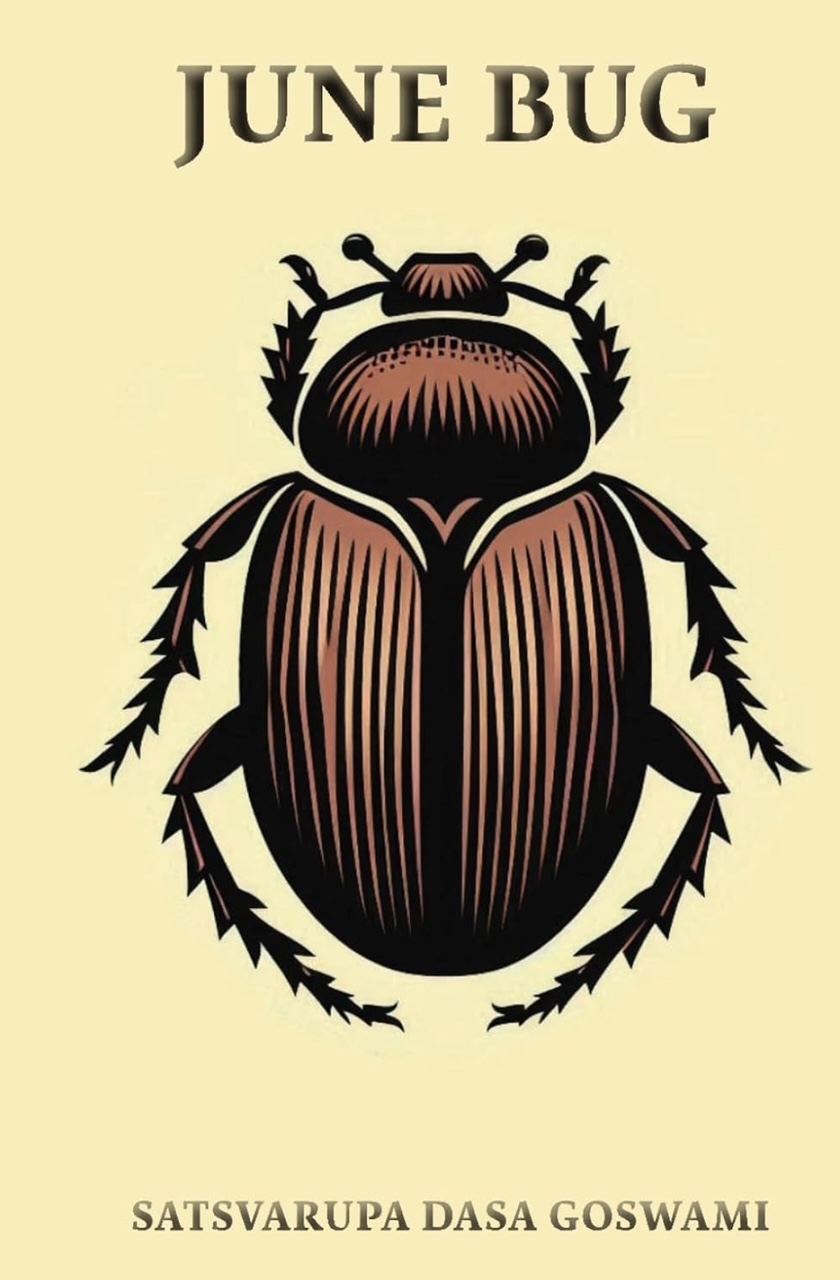
Readers will find, in the Appendix of this book, scans of a cover letter written by Satsvarūpa Mahārāja to the GN Press typist at the time, along with some of the original handwritten pages of June Bug. Together, these help to illustrate the process used by Mahārāja when writing his books during this period. These were timed books, in the sense that a distinct time period was allotted for the writing, during SDG’s travels as a visiting sannyāsī

Don’t take my pieces away from me. I need them dearly. My pieces are my prayers to Kṛṣṇa. He wants me to have them, this is my way to love Him. Never take my pieces away.
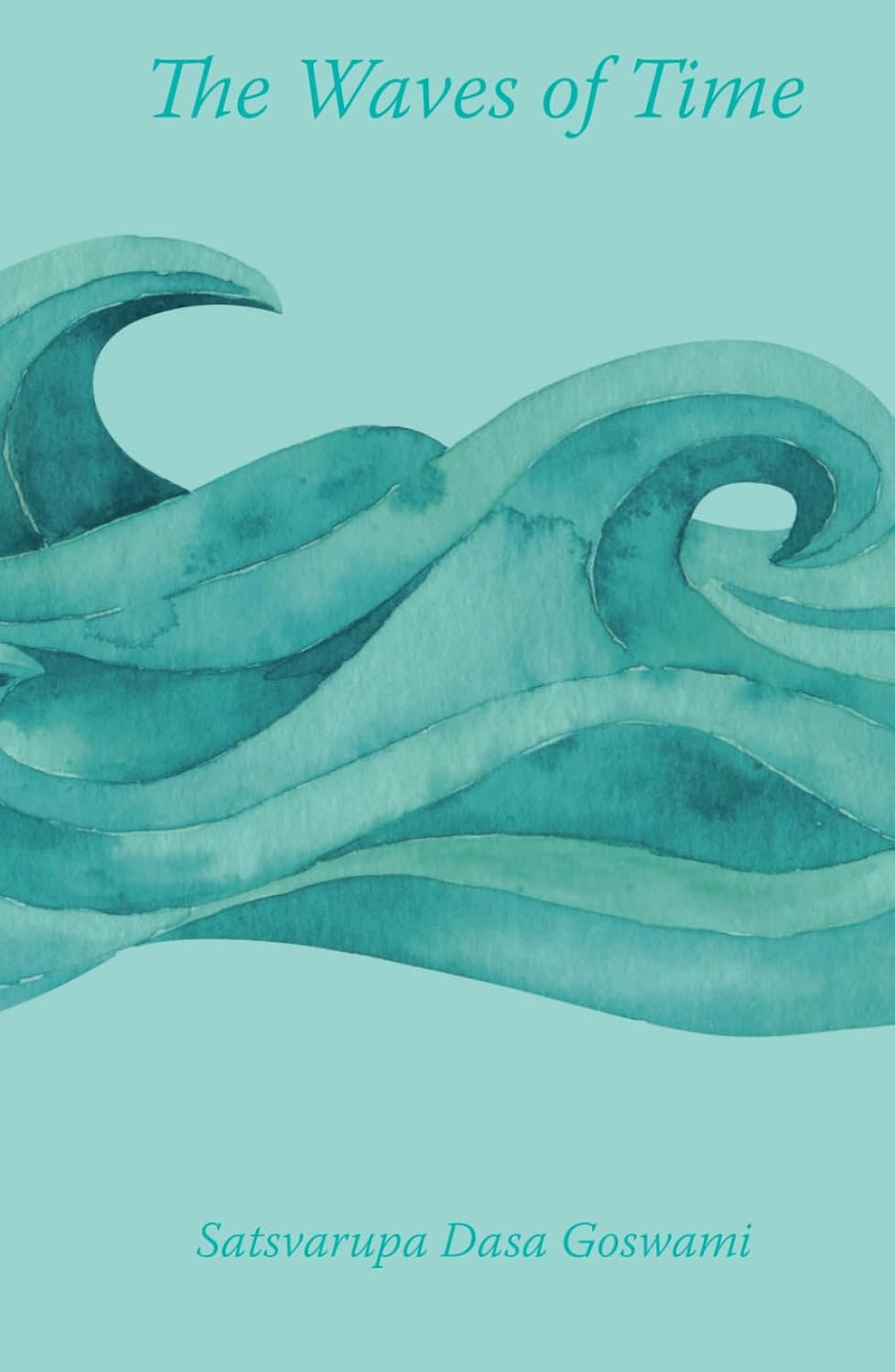
Many planks and sticks, unable to stay together, are carried away by the force of a river’s waves. Similarly, although we are intimately related with friends and family members, we are unable to stay together because of our varied past deeds and the waves of time.
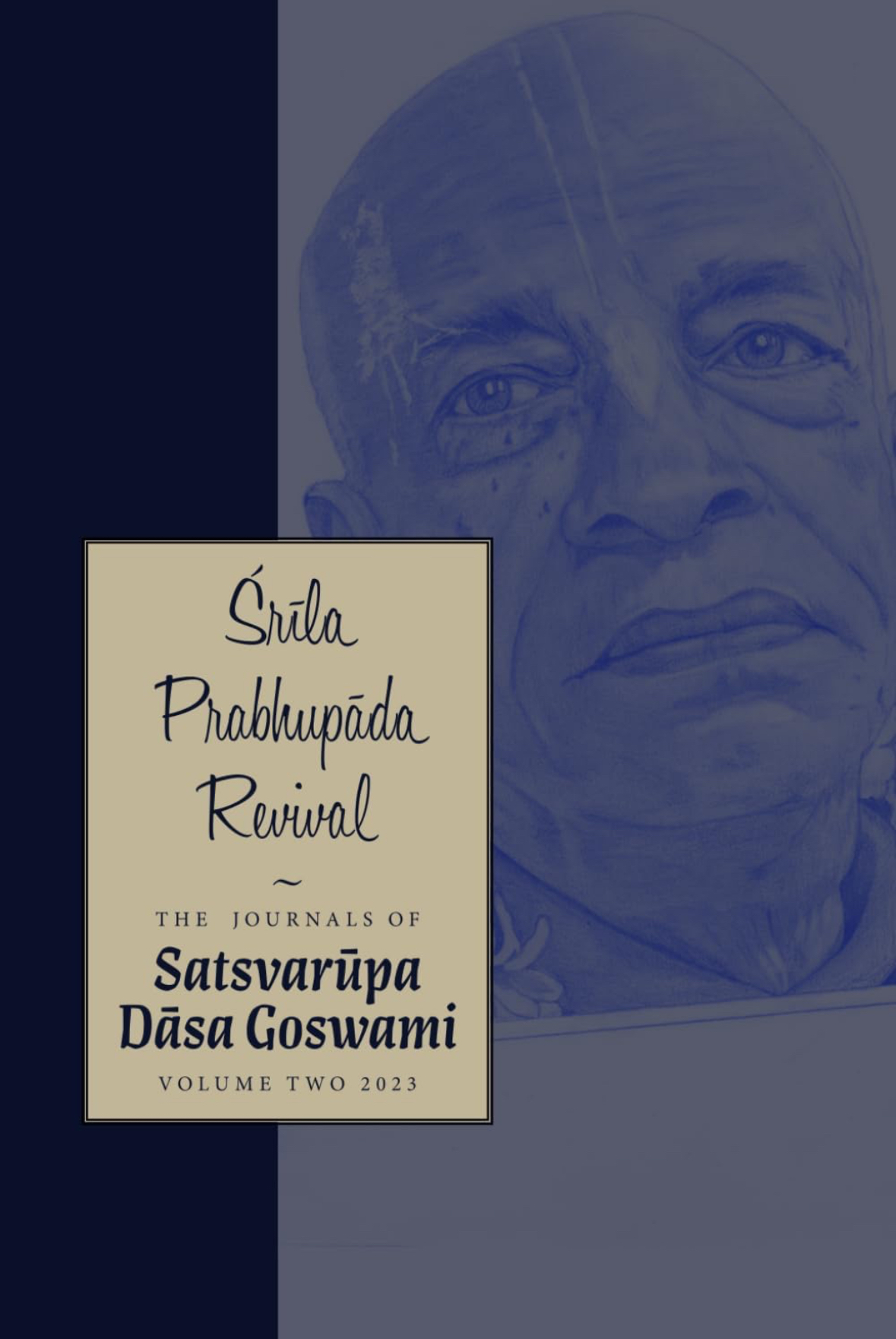
To Śrīla Prabhupāda, who encouraged his devotees (including me) To write articles and books about Kṛṣṇa Consciousness.
I wrote him personally and asked if it was alright for his disciples to write books, Since he, our spiritual master, was already doing that. He wrote back and said that it was certainly alright For us to produce books.
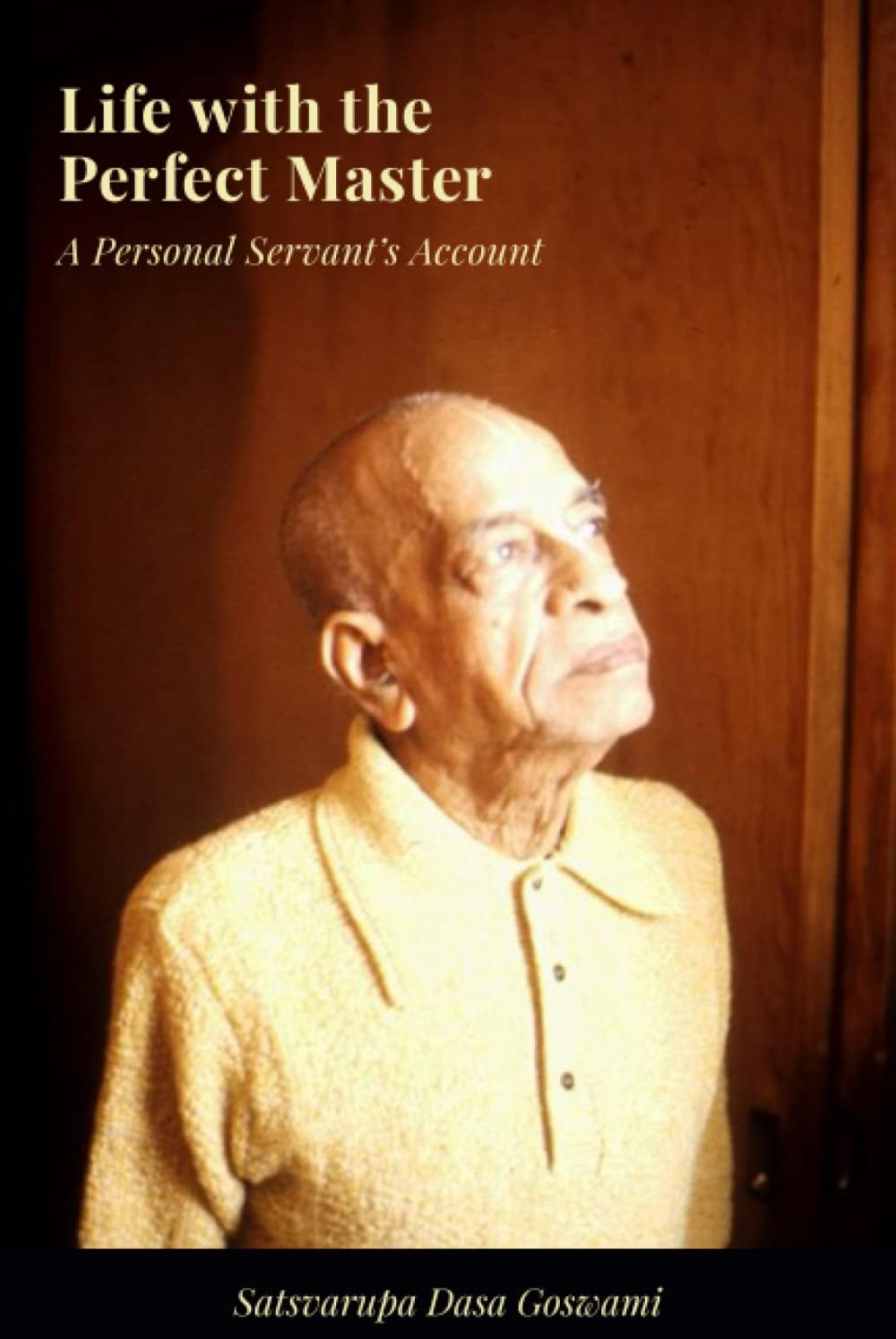
I have a personal story to tell. It is a about a time (January–July 1974) I spent as a personal servant and secretary of my spiritual master, His Divine Grace A.C. Bhaktivedanta Swami Prabhupäda, founder-äcärya of the International Society for Krishna Consciousness. Although I have written extensively about Çréla Prabhupäda, I’ve hesitated to give this account, for fear it would expose me as a poor disciple. But now I’m going ahead, confident that the truth will purify both my readers and myself.
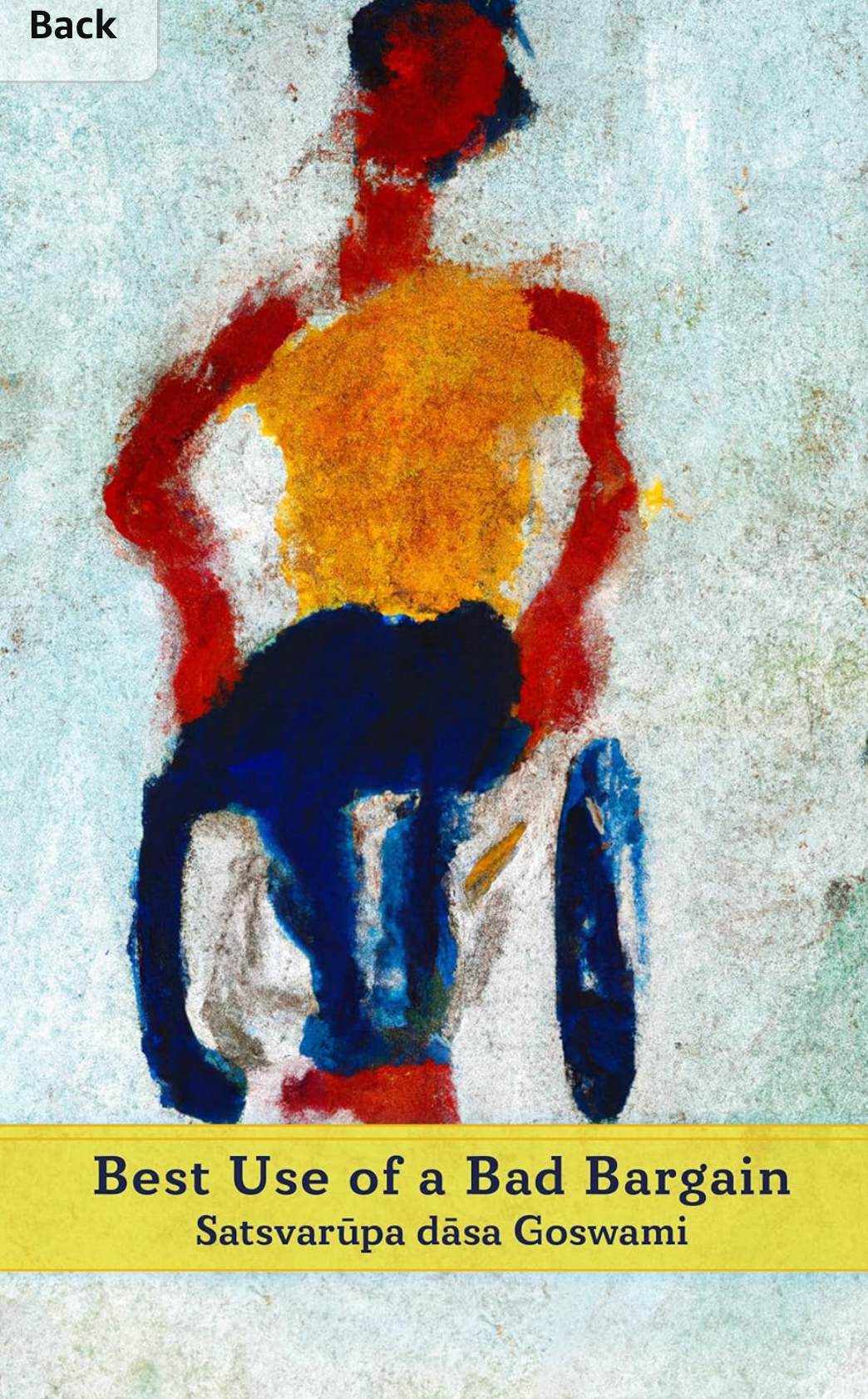
First published by The Gītā-nāgarī Press/GN Press in serialized form in the magazine Among Friends between 1996 and 2001, Best Use of a Bad Bargain is collected here for the first time in this new edition. This volume also contains essays written by Satsvarūpa dāsa Goswami for the occasional periodical, Hope This Meets You in Good Health, between 1994 and 2002, published by the ISKCON Health and Welfare Ministry.
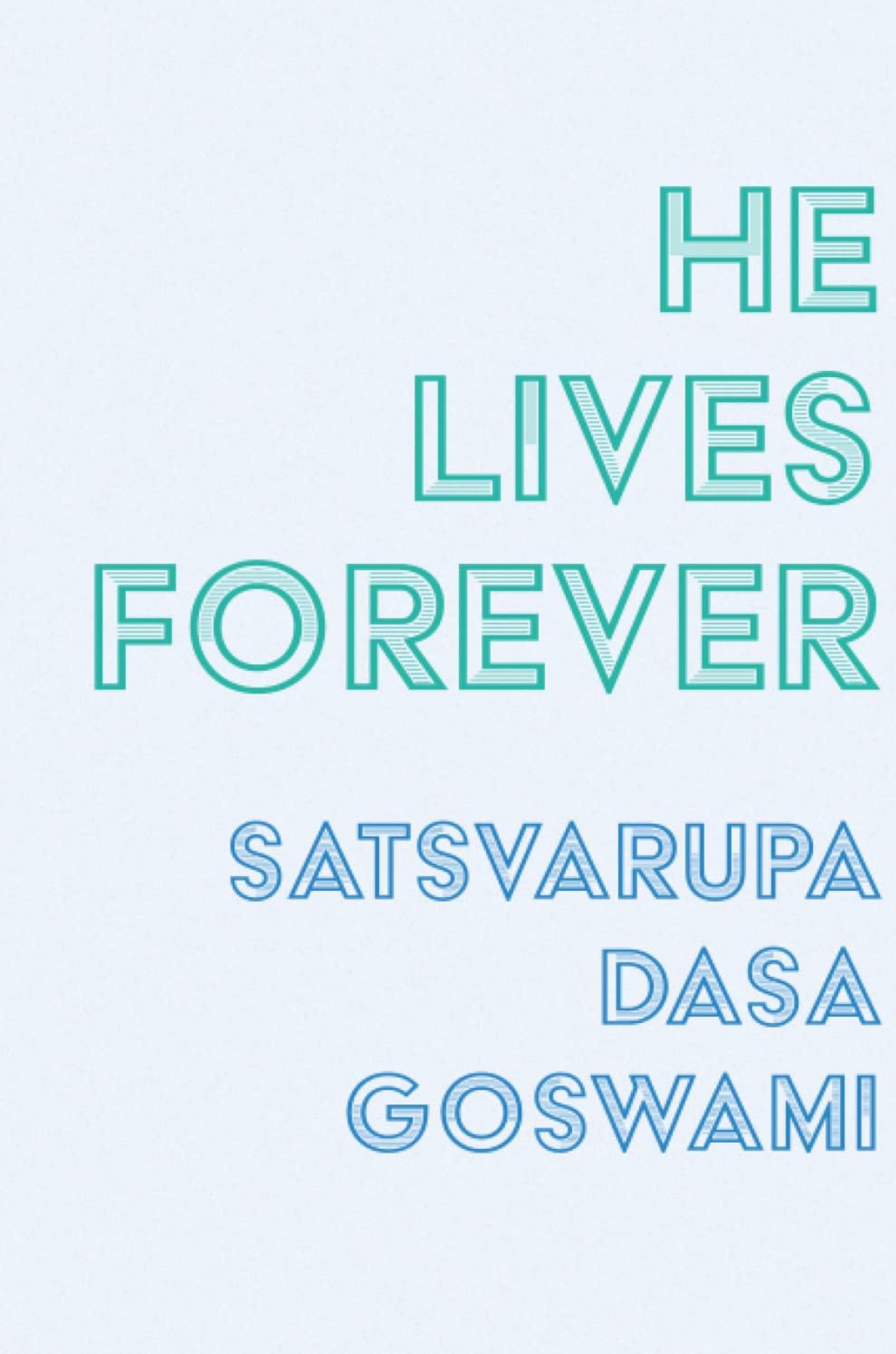
This book has two purposes: to arouse our transcendental feelings of separation from a great personality, Śrīla Prabhupāda, and to encourage all sincere seekers of the Absolute Truth to go forward like an army under the banner of His Divine Grace A.C. Bhaktivedanta Swami Prabhupāda and the Kṛṣṇa consciousness movement.
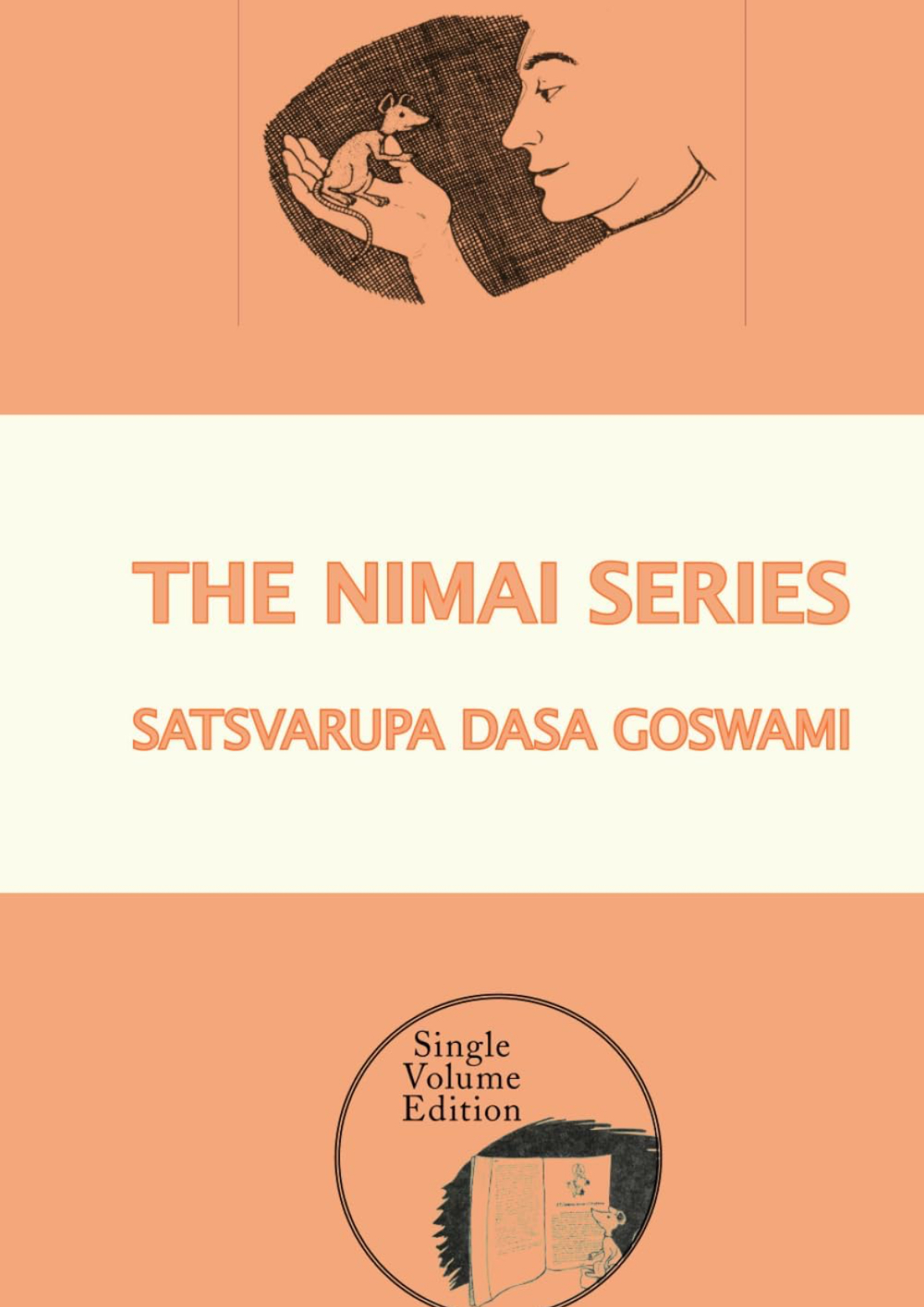
A single volume collection of the Nimai novels.
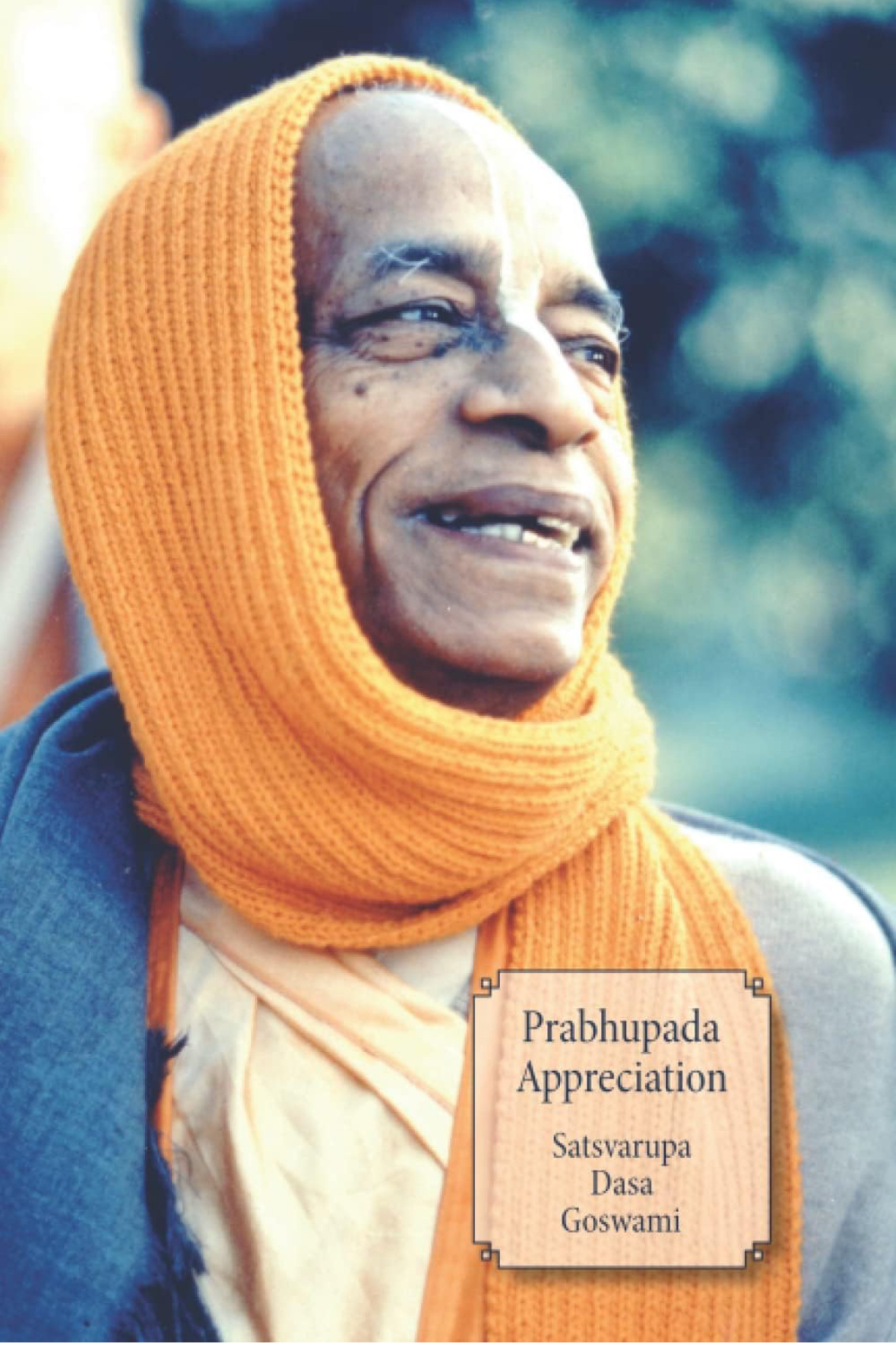
Śrīla Prabhupāda was in the disciplic succession from the Brahmā-Mādhva-Gauḍīya sampradāya, the Vaiṣṇavas who advocate pure devotion to God and who understand Kṛṣṇa as the Supreme Personality of Godhead. He always described himself as simply a messenger who carried the paramparā teachings of his spiritual master and Lord Kṛṣṇa.
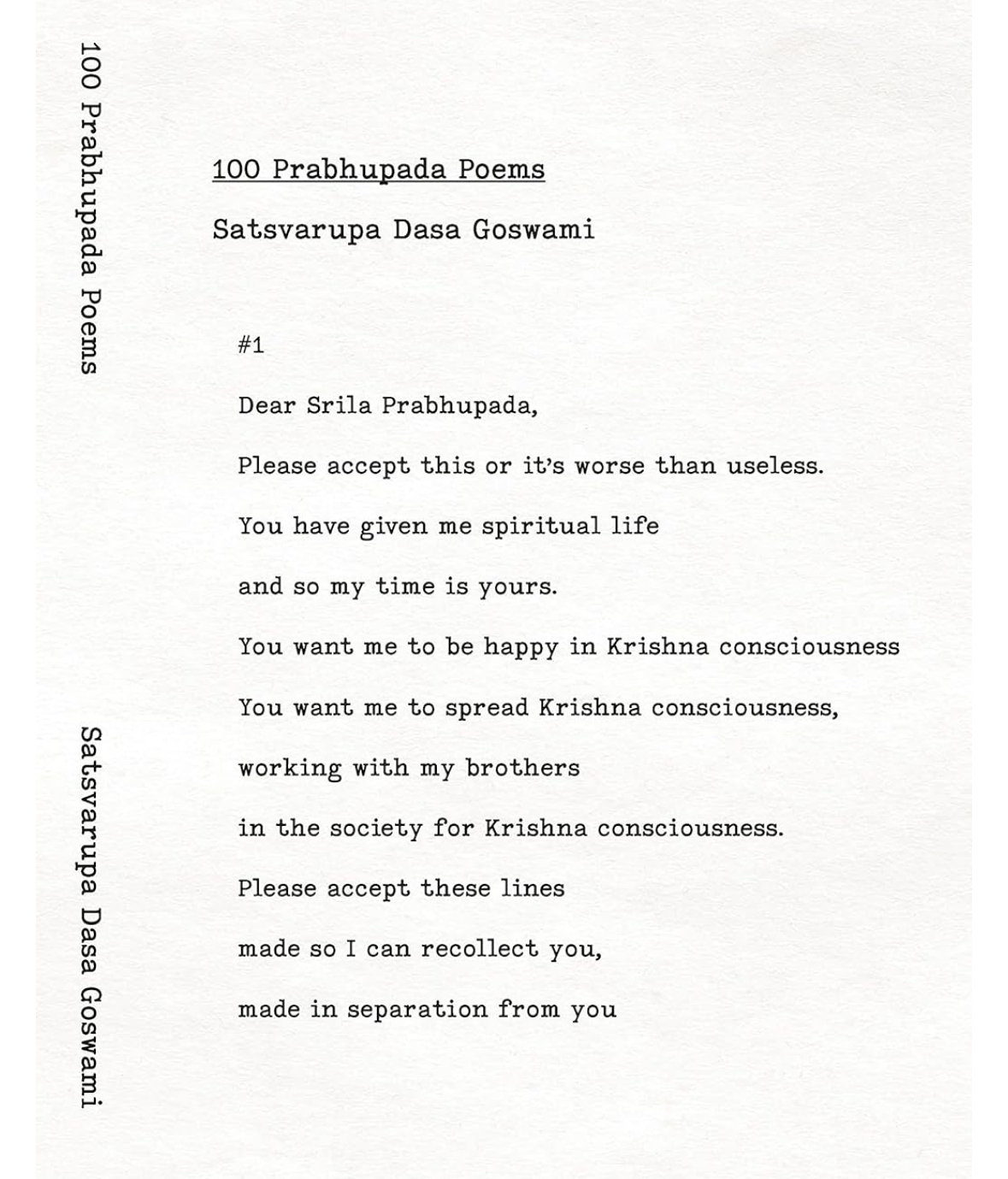
Dear Srila Prabhupada,
Please accept this or it’s worse than useless.
You have given me spiritual life
and so my time is yours.
You want me to be happy in Krishna consciousness
You want me to spread Krishna consciousness,

This collection of Satsvarūpa dāsa Goswami’s writings is comprised of essays that were originally published in Back to Godhead magazine between 1966 and 1978, and compiled in 1979 by Gita Nagari Press as the volume A Handbook for Kṛṣṇa Consciousness.

This second volume of Satsvarūpa dāsa Goswami’s Back to Godhead essays encompasses the last 11 years of his 20-year tenure as Editor-in-Chief of Back to Godhead magazine. The essays in this book consist mostly of SDG’s ‘Notes from the Editor’ column, which was typically featured towards the end of each issue starting in 1978 and running until Mahārāja retired from his duties as editor in 1989.
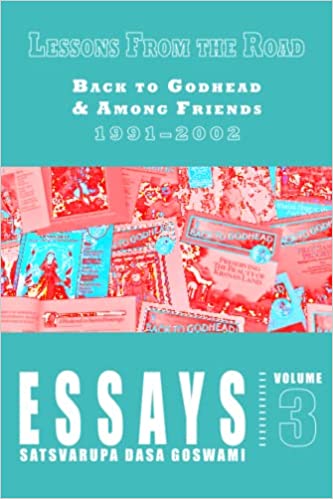
This collection of Satsvarupa dasa Goswami’s writings is comprised of essays that were originally published in Back to Godhead magazine between 1991 and 2002, picking up where Volume 2 leaves off. The volume is supplemented by essays about devotional service from issues of Satsvarupa dasa Goswami’s magazine, Among Friends, published in the 1990s.

“This is a different kind of book, written in my old age, observing Kṛṣṇa consciousness and assessing myself. I believe it fits under the category of ‘Literature in pursuance of the Vedic version.’ It is autobiography, from a Western-raised man, who has been transformed into a devotee of Kṛṣṇa by Śrīla Prabhupāda.”
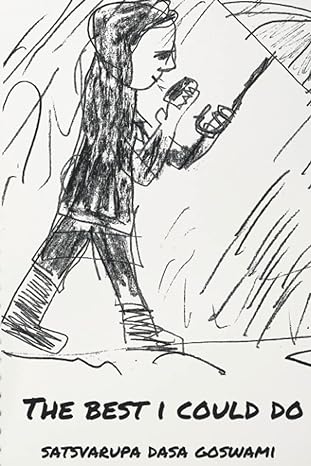 The Best I Could Do
The Best I Could DoI want to study this evolution of my art, my writing. I want to see what changed from the book In Search of the Grand Metaphor to the next book, The Last Days of the Year.
 a Hare Krishna Man
a Hare Krishna ManIt’s world enlightenment day
And devotees are giving out books
By milk of kindness, read one page
And your life can become perfect.
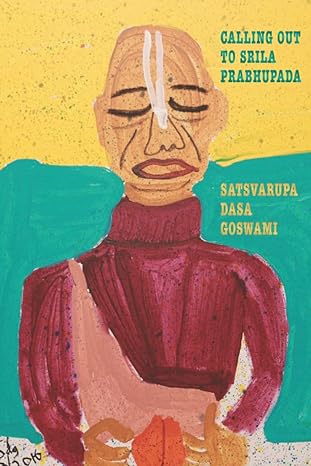 Calling Out to Srila Prabhupada: Poems and Prayers
Calling Out to Srila Prabhupada: Poems and PrayersO Prabhupāda, whose purports are wonderfully clear, having been gathered from what was taught by the previous ācāryas and made all new; O Prabhupāda, who is always sober to expose the material illusion and blissful in knowledge of Kṛṣṇa, may we carefully read your Bhaktivedanta purports.
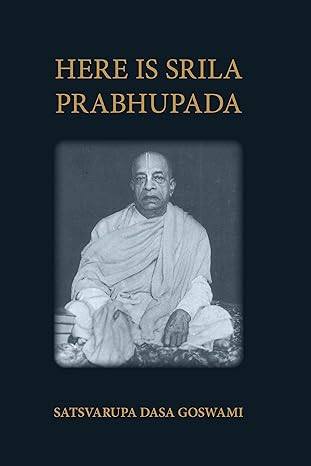
I use free-writing in my devotional service as part of my sādhana. It is a way for me to enter those realms of myself where only honesty matters; free-writing enables me to reach deeper levels of realization by my repeated attempt to “tell the truth quickly.” Free-writing takes me past polished prose. It takes me past literary effect. It takes me past the need to present something and allows me to just get down and say it. From the viewpoint of a writer, this dropping of all pretense is desirable.
 Geaglum Free Write
Geaglum Free WriteThis edition of Satsvarūpa dāsa Goswami’s 1996 timed book, Geaglum Free Write Diary, is published as part of a legacy project to restore Satsvarūpa Mahārāja’s writings to ‘in print’ status and make them globally available for current and future readers.